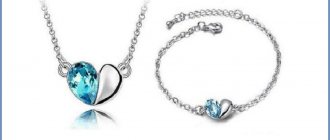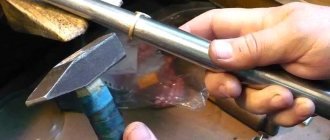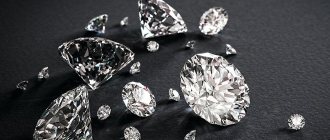For centuries, gold was considered the most valuable noble metal, which played a key role in a wide variety of areas of human activity.
But if in ancient times there were no specific methods for extracting this material, in addition to developing mines, then today things are much better and it is possible to extract a certain amount of gold from stone.
Noble solar metal in field conditions, primary deposits, what it looks like, places of localization
Precious metal can be found among rocks, mountains, ore, lake and sea sand. Natural reserves are limited, and throughout its history, humanity has mined about 200 thousand tons of this metal.
In nature, the precious metal looks completely different from what it does on the shelves of jewelry boutiques. It can be of various shades: from emerald gray to crimson.
Particles of solar metal are present in many different stones, but in such tiny quantities that they are of no value. A person who wants to engage in serious gold mining will have to rely on fortune and know the principles of calculating deposits.
Stones containing gold
The most common place for metal localization is quartz layers.
This is where large nuggets are discovered. Bottom sediments are found at the bottom of rivers.
What does it look like?
Gold occurs in nature in the form of nuggets, fine-grained placers, and powder dust. It is included in the veins of stones and rocks. By law, stones found with gold inclusions are transferred to refineries.
Gold in stones can be found in mountain rivers, rocks, mountains, sand of seas and lakes, ore mixed with other minerals. It is difficult to get it from there without loss. It is also necessary to determine whether this substance is a noble metal, and not iron pyrite or zinc blende. Pyrite and other minerals, similar in their luster to yellow precious metal, crumble if they are scratched with a needle. Gold from stones does not crumble, but is scratched, like other metals.
Gold inclusions in stone
The satellites of gold sands and placers are very similar to the precious element, but they can be distinguished from each other. Often gold is accompanied by intrusive rocks formed as a result of solidification of magma - these are quartz diorites and granite, quartz. Chalcopyrites, galerites, pyrites, antimonites, sphalerites, and arsenopyrites are also considered neighbors of the precious element. It is quite difficult to obtain gold from granite; special technologies are required.
Zinc blende, or sphalerite, is a dark-colored rock (black or brown) with a characteristic shine. Occurs in the form of crystals. It scratches easily, unlike precious metal, and crumbles.
Gold is obtained from stones using different chemical methods. Lead sulfite is called galena, or lead luster. It can be broken with a hammer into cubes into which the mineral was divided using adhesive cracks.
Arsenopyrite is an arsenic sulfite that emits a garlicky odor when destroyed.
Antimony sulfite, that is, stibnite, is a rock that accompanies gold, has a luster like lead, and the color of the mineral is grayish-black. Its crystals are needle-shaped and can be included in a quartz crystal.
Limonite has a brown-orange or ocher color. This mineral, also called iron ore, is one of the most common satellites of gold. Quartz veins often contain limonite crystals. Gold is extracted from stones of the brown mineral limonite through complex processing with acids and electrolytic transformations. May contain large amounts of metal.
The iron ore mineral forms brownish-brown iron caps on sulfite bodies. Gold from stones is obtained in many cases from iron ore ore, which contains many impurities of the noble metal. This is done by gold mining enterprises accredited by the state.
Quartz and quartz diorites also contain a lot of precious metal. They accompany it in rocks; in rivers you can see gold from stone and in sand along with quartz crystals, from the veins of which gold dust scatters and can be carried along rivers. Sometimes it can settle in silt and soil, sand, on pebbles at the bottom of rivers and lakes, on the coasts of seas and even oceans. Small particles of metal are presented in the form of gold placers.
What does gold look like in quartz? There are quartz rocks of different types - coarse-grained, fine-grained, layered, banded, confluent with inclusions of another mineral - rock crystal. Quartz with inclusions of gold has a yellowish-brown color. It’s hard not to notice such a mineral.
Gold and sand are frequent companions in nature, especially at the bottom of rivers and lakes. There are several types of gold placers:
- Alluvial - formed by breaking rocks and transporting placers along rivers.
- Eluvial - ore bodies that are not washed away by rivers and occur in watersheds.
- Colluvial - destroyed rocks containing gold. They occur on the slopes of mountains and the coasts of seas and lakes.
Gold from stone and sand is mined in rivers, lakes, and mountains using special equipment. Placers can be found with special metal detectors by setting the desired frequency.
There are different types of placers, which, in addition to gold, also contain other valuable rocks - wolframite, osmium and iridium impurities, cassiterite, ilmenite (titanium). Gold from stones can fall out due to a fault, forming placers of dust. Channel, spit, valley, terrace, and spoon placers contain gold and other minerals. There is no peat in river beds, in which it is impossible to find golden grains of sand. Spit placers are located on shallows and spits in the form of floating particles.
Conclusion
Gold refining from stone is carried out by special enterprises that have a license for this type of activity. Visible gold lies in rocks; ores are processed in a special way to separate the metal from other minerals and impurities of chemical elements.
Hello dear readers. Did you know that gold ore is scattered all over the world and is very common in rocks. You can meet it simply by walking along the rocky spurs. In this article we will talk not only about where you can find precious metal, but also about how to recognize and extract gold from a stone.
What kind of stones and types contain gold?
It is difficult for a person for whom gold mining is new to determine whether a stone contains a precious metal. Pure gold is practically never found, and its alloys have different shades and intensity of shine.
So, what stones contain gold? Let's find out.
Igneous body
Most often, the metal is found in intrusive rock, formed when magma reaches the surface.
Quartz crystals
Quartz is one of the most common minerals on Earth; its name translates as “hard.” It is a true companion of gold, but not all crystals contain it.
Quartz veins attract increased attention from miners. Such ore masses especially often contain gold metal.
Gold-bearing quartz can be yellow, brown, blue or gray in color due to the presence of sulfides. Sulfides are another satellite of gold.
What is a gold nugget
A gold nugget is an opaque piece of native gold (ore rock) enriched with minerals. In terms of its chemical composition, it is a frozen natural solution of a compound of silver, precious metal and impurities.
Native gold contains up to 10% of ores found in rock deposits. Combines with iron, copper, platinum, iridium, osmium. The shade of the nugget depends on them.
View this post on Instagram
Posted by JEWELRY • MAGADAN • (@zoloto_999_magadan) Nov 16, 2015 at 5:18 PST
Description of native gold:
| Options | What it looks like in nature |
| Dimensions | Nuggets include a single piece of gold over 2 grams, the weight sometimes reaches more than 100 kg. Formed in the form of dust (sand), grains less than 5 mm. |
| Color | Yellow (lemon to amber), yellow-red, silver-white, possible greenish tint |
| Color of crushed nugget | Yellow |
| Surface | Dull or bright, with a metallic sheen, smooth or uneven, there are notches, notches. Sometimes covered with another rock (called “shirted”) |
| Form | Bizarre, reminiscent of geometric shapes, plates, animals, feathers, branches and other objects |
| Hardness | Soft, corresponds to 2.5–3 points on the Mohs scale |
| Try | 800–950 (high-quality native gold). The more impurities, the lower the sample |
Often gold is connected to stones because it was formed at the same time as them or crystals began to grow around the precious metal. It occurs inside the mineral, on its surface, or lies separately from the destroyed gem.
There are stones with yellow shiny inclusions, reminiscent of gold. They don't actually contain precious metal.
To see what nuggets look like:
How is it different from pyrite?
Pyrite is a shiny mineral similar to gold. The gem is straw-colored, but when crushed, the powder turns out not yellow, but green-black.
Hardness also varies. For pyrite it reaches 6.5 Mohs points, and for the precious metal it does not exceed 3.
It also differs in cleavage. When native gold is struck, it becomes deformed. Pyrite crumbles into pieces and dust, and can create sparks.
How to test a stone for gold
Solar metal can easily be confused with pyrite. During the exploration of Mexico, Spanish conquistadors loaded their ships to capacity with pyrite, mistaking it for gold.
There are two reliable ways to help recognize a real precious metal:
Scratch
The easiest way to check is to scratch the gold-plated surface with a thin needle. The result must be assessed through a magnifying glass. Solar metal does not crumble under mechanical stress.
Place in sulfuric acid
You can try placing the found particles in a test tube with sulfuric acid. Next you need to monitor what the reaction will be. In its absence, we can conclude that the find really turned out to be gold.
You can also distinguish precious metals from “fake” ones with the help of iodine and brilliant green.
Gold in acid
Processing of gold ores[edit | edit code]
Main article - Beneficiation of gold ores
Placers and conglomerates are processed using gravity schemes. After gravity concentration, flotation can be used to increase the recovery of fine grains of gold. Bedrock ores are enriched mainly using combined schemes using flotation.
Schemes and modes of ore processing significantly depend on their mineral composition, destruction, the presence or absence of impurities that complicate the extraction of gold, as well as on the size of gold particles.
3 options for processing ore in search of gold
Obtaining pure metal from gold-containing stones is not an easy task, requiring special equipment and knowledge in chemistry. There are three main methods of processing ore; let’s look at them in more detail.
Chemical using aggressive acids
This method is characterized by contact of ore with aggressive chemicals. To obtain the result, you need to select the right acid, which will dissolve foreign elements without affecting the gold. The precious metal will fall out as sediment.
The secret of the method is that it is almost impossible to dissolve gold using aggressive acids. For these purposes, only concentrated chlorine, amalgam, and aqua regia are suitable.
Concentrated chlorine and stone with gold
Dry by rock crushing
This method is the most expensive and requires increased security measures.
General characteristics[edit | edit code]
There are primary deposits (including veins with a gold content of 1...30 g/t) and placers in the form of alluvium (gold content of 0.5...50 g/m³). In addition to gold-bearing ores themselves, gold-containing ores of copper, nickel, lead and zinc, silver, iron (ferruginous quartzites), and manganese, in which gold acts as an associated component, are known. More than 30 gold minerals have been discovered. The main industrial importance is native gold, secondary - kustelite (Au about 10-20%) and tellurides: calaverite - AuTe2 (40-43% Au), krennerite - (Au, Ag)Te2 (40% Au), sylvanite - (Au , Ag)Te4, (25-27% Au), petzite Ag3AuTe2 (25% Au). Rare - cuproauride - AuCu2, rhodite - Au, Rh, porpecite - Au, Pd, aurostibite AuSb2, maldonite Au2Bi, gold sulfide uytenbogardeite - Ag3AuS2, etc. Associated components of gold ores - Ag, Cu, Pb, Zn, Bi, As, Sb , Te, Hg, W, Sn, Co, Ni.
There are endogenous, exogenous and metamorphosed gold ores.
Geography of places attractive to prospectors. Gold-bearing rivers of Russia
You don't have to go to the Klondike to feel the spirit of the gold rush. Russia is extremely rich in placer gold.
Around the first half of the 19th century, the term “Siberian gold” appeared. The Irkutsk region and Krasnoyarsk region turned out to be rich in many gold deposits. They were discovered inside the basins of the Ob, Tom, and Yenisei rivers. Now the Siberian precious metal is the basis of the gold mining industry of the Russian Federation.
In Bashkiria, gold was discovered in the valleys of 7 rivers in the Uchalinsky region. Nuggets weighing about 16 kilograms were found here. At the moment, gold mining in these territories is not developing so actively, although it has excellent prospects.
Home techniques
Industrial gold mining differs significantly from private gold mining, and the methods used have many advantages. If you know how to identify gold in a stone, you can successfully remove it from there using the most primitive methods.
And you don’t have to go to distant Siberia in search of abandoned mines. You can implement the idea of withdrawing precious metals at home. Back in the days of the Soviet Union, skilled craftsmen extracted it from old watches and other yellow metal products. In the recent past, gold plating was present on many radio components and household appliances, which was justified by its practicality and resistance to corrosion. Without a doubt, the percentage of gold content in such objects is negligible, but in the rock it is not that high.
If you want to get the precious yellow material at home, just take an old wristwatch and then fill it with nitric acid in glass or plastic containers. The substance will quickly dissolve any materials except gold. The resulting solution must be carefully passed through several layers of gauze, and the seized gold must be infused in vodka for 24 hours. This will result in a brownish tint.
In the future, it is necessary to rinse the composition with plain water, filter again and put on low heat to melt. To improve the efficiency of the latter process, soda is added to the gold. We must not forget about the ability of the yellow metal to evaporate, but through melting it is cleared of excess impurities and becomes like a tiny ingot.
Gold can also be extracted from radio components , in which it was used back in the Soviet Union due to its inertness and minimal electrical conductivity. To implement such an idea, you need to use “regia vodka”, which consists of nitric and hydrochloric acid. Such a substance can dissolve gold at room temperature. By the way, there are historical facts about the dissolution of gold medals in order to hide them from the fascist military. Under the influence of aqua regia, gold precipitates, after which it is thoroughly filtered and washed.
Gold laundering sites in other countries
Modern treasure hunters should pay attention to the following countries:
1. Republic of Ghana, West Africa: no legal restrictions, the Tarkwa region includes 4 gold-bearing places.
2. Indonesia: to carry out gold mining you will need a license, which local authorities issue even to tourists.
3. Norway: the mountain rivers of this country attract many miners every year; a license is required to launder gold.
4. Finland: the Ivailoki River is famous for the presence of loose solar metal.
5. Australia: the most attractive country for gold miners; the authorities issue not only licenses to operate, but also the necessary equipment. To launder precious metals, it is worth visiting areas of the state such as Victoria and South Wales.
Magical qualities of the stone
Back in the Middle Ages, the extraordinary magical properties of this mineral were described. It is especially needed for those who lack luck and fortune. Energy allows you to achieve success in any endeavor and gain wealth. Thanks to it, the owner of the stone becomes more energetic and active.
Another wonderful ability of aventurine is the awakening of intuition and the manifestation of talents. It gives inspiration and recognition to creative people and helps them overcome a creative crisis.
Contrary to popular belief, the green variety is not a talisman for swindlers and card players. The mineral provides protection to lovers, protects their feelings and helps preserve love for many years. The green mineral is a symbol of family well-being. He is able to protect from damage and envy. A decoration with such a stone can be hung over a child’s crib to protect him from fears and illnesses.
How to extract gold from stone at home
You can extract gold from stone at home. When deciding on a suitable refining method, you need to know all the main characteristics of the precious metal.
Consider a method using bleach.
First, the stone should be crushed, after firing it with a burner. Only after this the crushing equipment is used.
Most often, the gold in the stone is small and cannot be seen with the naked eye. Therefore, the rock is crushed into dust by a crusher.
The crushed material must be filled with sulfuric acid and bleach. Regular bleach will do for cleaning bathtubs. To accelerate the reaction, all elements must be mixed and then left for 6 hours. Next, start filtering.
Modern mining technologies
The mined ore from the quarry is delivered by dump trucks to the processing plant, where the raw materials undergo primary processing:
- sorting, depending on the percentage of metal;
- mixing batches to form a homogeneous composition according to the degree of gold presence;
- screening out large inclusions, which are separately subjected to additional grinding;
- grinding of raw materials into a dusty mass and subsequent enrichment with the addition of water, preparation of material ready for processing by flotation - saturation with air;
- introduction of chemical reagents that promote the separation of gold;
- foam is selected from the resulting composition (directly – gold suspension), thickened using special reagents;
- the next stage is squeezing out excess water in press filters;
- The dehydrated material is dried in ovens at high temperatures and crushed.
One ton of the concentrate obtained after processing contains up to fifty grams of gold.
The products of the processing plant are finally converted into precious metal after smelting at a hydrometallurgical plant.
The healing effects of golden sand
The healing properties of aventurine have been known for as long as the magical ones. Lithotherapists recommend using this stone in the following situations:
- To cleanse the body and improve metabolic processes.
- To prevent the formation of blood clots and normalize the functioning of the heart and blood vessels. Wearing pendants, rings or bracelets with dark red aventurine helps stabilize blood pressure.
- To reduce inflammation and pain resulting from injury.
- For migraines to relieve pain.
- To improve the growth and development of children.
- To relieve fatigue and improve performance. The stone is good at calming the nerves.
- To improve vision.
- The black variety has long been used to treat diseases of the musculoskeletal system.
- Wearing jewelry with aventurine helps improve the condition of the skin, hair and nails. A good effect is observed for eczema, hair loss, skin rashes. You can even remove warts with the help of aventurine.
- To improve the condition of the respiratory system and protect against bronchitis or colds, experts recommend wearing aventurine beads.
Traditional oriental medicine uses balls of this stone for massage. This way you can relieve muscle spasms and strengthen your joints.
It should be noted that it is not advisable to wear aventurine on the body all the time. To improve your health, you need to wear products with the mineral during the waning phase of the moon.
It is strictly contraindicated to wear jewelry with aventurine for more than a month in a row, no matter the severity of the disease. This can lead to excessive activation of energy processes in the body and the development of energy imbalance
. Lithotherapists consider the optimal regimen to be wearing jewelry or amulets for 7 days, after which a two-day break is taken.
Who is contraindicated for aventurine?
Not all people benefit from aventurine. For some categories, the energy of aventurine may be negative:
- People born under the constellations of Aries, Leo and Sagittarius may suffer significant financial losses and be disappointed in life. Traits of cynicism and fatalism appear in their character, and negative personality traits become aggravated. Such people turn into quarrelsome, hysterical individuals.
- Aventurine is not suitable for people born under the sign of Capricorn.
- People who are emotionally unbalanced and excitable should not wear jewelry with this mineral.
- The mineral is completely unsuitable for people holding responsible positions and strictly adhering to the rules. Although, it should be noted, such people never rely only on luck.
Even if aventurine suits you perfectly, you should not wear it for more than one lunar cycle. It is best to wear jewelry during the waning lunar phase.
If you do not adhere to these rules, capricious luck may turn away , and the owner of the stone will become emotionally unstable.











